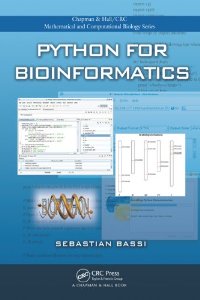
I have on several occasions had the privilege of teaching basic programming to biology students. My preferred language in this situation as in many others is python. I have also been fortunate enough to find a book which I think does a fairly good job of teaching basic python in a way that biologists find useful. In this context that mostly means dealing with sequences in a sensible way. The book in question is “Python for Bioinformatics” by Sebastian Bassi.
The only note here is that there are some spelling mistakes in it, and that it is from 2009. Python has progressed to Python version 3 now, whereas the book is at version 2. However, for a beginning programmer, this should not make too much of a difference.
I am here putting out the slides that I used for a one-day intro course for biologists. The course is very interactive, meaning that in the slides there are many short exercises which are followed by the answer. I am in this post putting out the first set of slides that deal with the basics, the rest will follow during the next couple of weeks.
Note: I have tried to ensure that these slides are bug free, but there are bound to be some mistakes somewhere. Please let me know if you spot any!
Enjoy!
Part 1: The basics
The first lesson begins with discussing programming a bit, and the two modes in which python can be used – interactively and batch mode. I then go through the basic datatypes in python, i.e. what kind of “things” that are available. I cover how to use python as a calculator, how to work with strings, and also what a list and a dictionary is and how to use them.
[gview file=”https://blog.karinlag.no/wp-content/uploads/2013/10/Basics.pdf” save=”0″]
